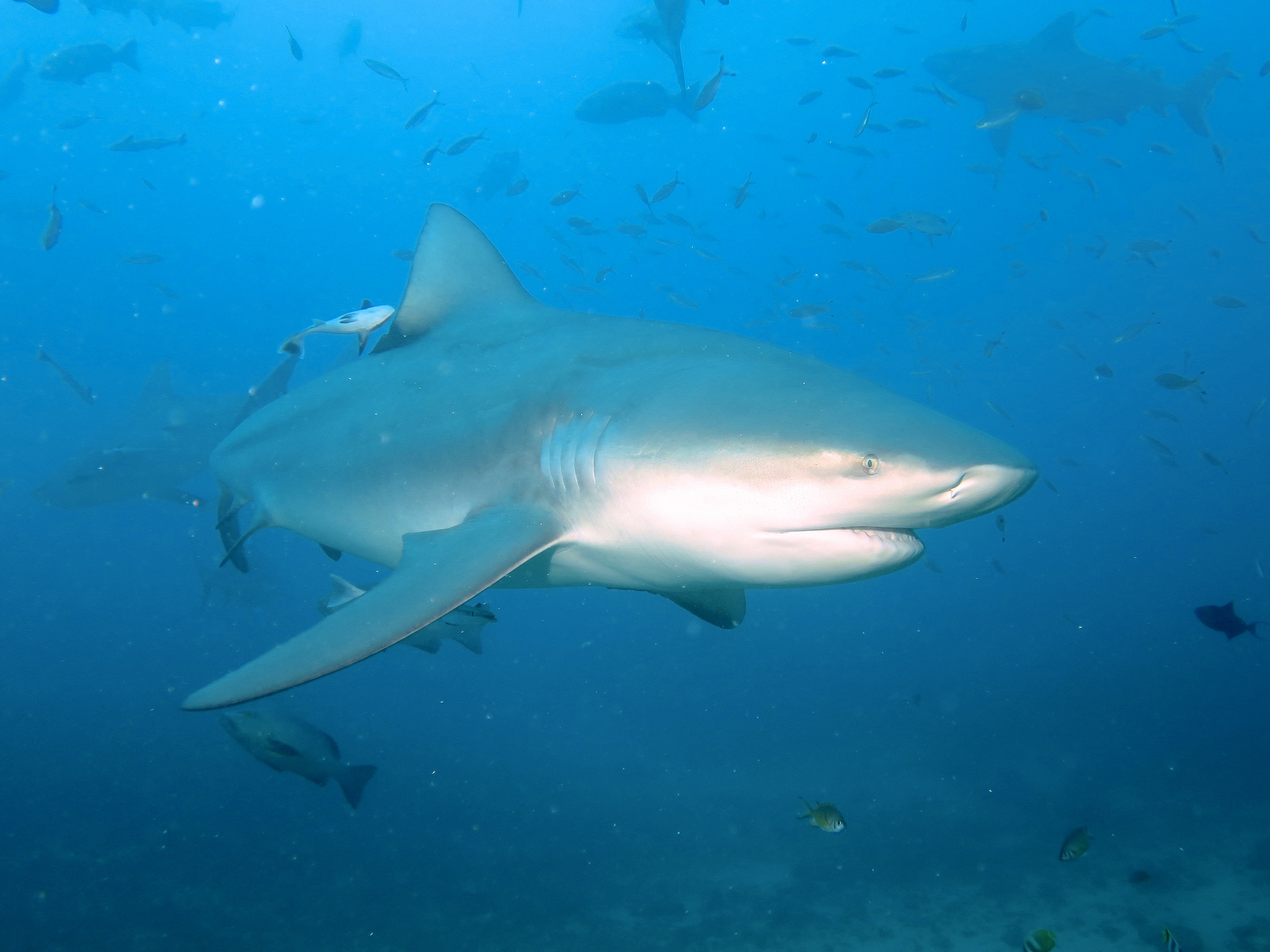STANFORD (USA)- Not many animals can change their habitat from saltwater to freshwater. There are many reasons for that. As for sharks this reason is quite obvious: they sink. But how about the bull shark?
A new study was published last week in the Journal of Experimental Biology and confirms this conclusion.
5 procent in freshwater
Cartilaginous fish like sharks thrive in marine ecosystems across the planet, yet few have evolved to occupy lakes and rivers. Of the more than 1,000 species of Elasmobranchii (sharks, rays, and skates), only 5 percent can live in freshwater, and most of them do so part-time only. Unlike more modern fish, with their fancy air bladders, the ancient elasmobranchs have only their oily livers as flotation devices.
Around 40 percent of bony fish (from goldfish to rainbow trout) live in freshwater. Researchers suspect it’s because of the metabolic costs of osmoregulation—having to maintain the right pressure by controlling water and salt concentrations in the body.
Swim bladders
So how big are the density differences between seawater and freshwater? Many bony fish have swim bladders to help control their buoyancy, the primary source of buoyancy in elasmobranchs is a lipid-rich liver.
Bull shark
But what about the bull shark (Carcharhinus leucas), which can be found in rivers thousands of kilometers from the shore like the Mississippi, Ganges or Zambezi? To research shark buoyancy Stanford’s Adrian Gleiss and colleagues designed a hydromechanical model based on the bull shark. These species can actually live a bigger part or their lives in freshwater.
They found that being in freshwater would lead to a two- to three-fold increase in negative buoyancy for sharks and rays—which carries the energetic cost of increased drag because they have to lift themselves.
8 times bigger liver
Sharks could try to compensate for this increased negative buoyancy, but then the lipid-rich liver would need to be eight times bigger by volume in order to maintain the same net buoyant effect they’d enjoy in marine waters.
To back up these calculations, the team also describe new data on body density from freshwater-occupying elasmobranchs captured from Fitzroy River in western Australia: five bull sharks and 17 largetooth sawfish (Pristis pristis). These have similar liver sizes as the 113 saltwater-dwelling cousins the team sampled, but lower liver densities.
In fact, these 22 displayed the greatest negative buoyancies of any elasmobranch to date.
Read more on the research.

